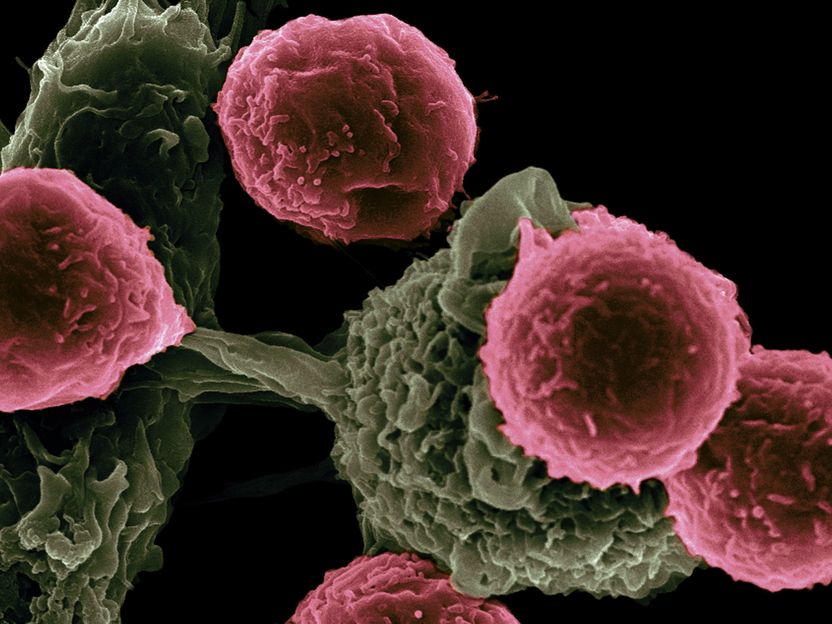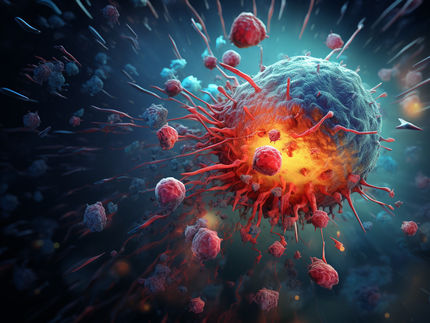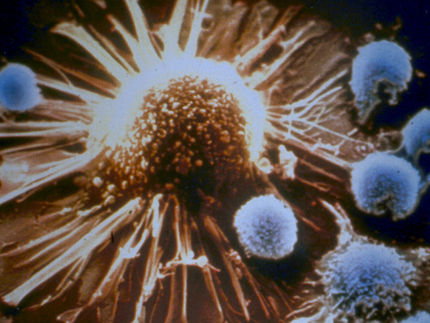Combining immunotherapies against cancer
New combination of vaccine and immune checkpoint inhibitors as a promising approach to improving the success of cancer treatment
A new cancer vaccine could boost the positive effects of existing immunotherapy drugs, improving the success rate of treatments from 20% to 75% of cases, according to a new study by immunologists from the University of Konstanz. The vaccine, which incorporates a new immunostimulant that is safe for use in humans, was shown to partially eliminate tumours in mice. However, the study further demonstrated that combining the vaccine with an immune checkpoint inhibitor -- an established immunotherapy drug with a 20% success rate overall for patients -- can vastly improve the proportion of individuals who respond to treatments, eliminating tumours in 75% of cases in mice. The results suggest that this new approach of using a vaccine in combination with established drugs may be a potent anti-cancer immunotherapy to be tested in future clinical trials. The findings appeared in Nature Communications on May 18, 2021.

Symbolic image
Photo by National Cancer Institute on Unsplash
Cancer therapy has seen a major breakthrough in recent years due to a type of immunotherapy known as "immune checkpoint inhibition". Immune checkpoint inhibitors work by stopping the body's natural ramping down of its immune response, causing the body instead to sustain its attack on tumour cells. This has proven to be effective for certain types of cancers, such as melanoma and squamous cell skin cancer, lung cancer, kidney cancer, and liver cancer.
But not all cancer patients respond to this immunotherapy. For example, only 20% of patients with melanoma can be cured. An explanation for why many do not respond well is that immune checkpoint inhibitors rely on the body initiating an immune response, which the drugs then prolong. If the body does not recognise its tumour cells as foreign, the immune checkpoint inhibitors have no immune cells to work off.
Now, a team led by Professor Marcus Groettrup, Chair of Immunology at the University of Konstanz, has developed a technique that kickstarts an immune response to a tumour. The microparticle-based cancer vaccine, which uses the immunostimulant Riboxxim that has the approval for application in humans, can generate the body's T-cell response that is necessary for immune checkpoint blockade drugs to be effective.
"A major shortcoming in cancer vaccines is the availability of immunostimulants that can be used in humans," says Marcus Groettrup, senior author on the study. "We can show that our clinically applicable vaccine combined with immune checkpoint blockade leads to an increase in the proportion of mice that can be cured of existing tumours to 75 percent."
A cancer vaccine that's safe for humans
The aim of the study was to develop a particle-based cancer vaccine which effectively launches an immune response against tumours and that is suitable for transition into clinical application.
The team created particles measuring 1 micrometre (or 0.001 mm) that included a tumour protein and Riboxxim--a molecule that primes the immune system to launch a response. Riboxxim is produced by the company Riboxx Pharmaceuticals in Dresden, Germany.
Mice that were injected with a single dose of the microparticle-based vaccine launched a strong anti-tumour immune response that was still detectable after 8 weeks. Even very low doses of the vaccine were able to generate strong immune responses compared to other immunostimulants.
The team tested the vaccine against a range of fragments from cancer proteins, including those of prostate cancer, breast cancer, and melanoma. Strong cellular immune responses against all these antigen fragments were obtained in mice, suggesting that the new approach might be applied to a variety of cancers.
A synergistic combination
However, due to the body's natural down regulation of its immune response, the tumours gradually returned 30 days after vaccination. But if the vaccine was combined with an immune checkpoint inhibitor, the therapeutic benefits continued and tumours were eliminated.
"We were able to formulate a clinically applicable cancer immunotherapy which acts complementary to commonly used immunotherapy," says Dennis Horvath, who is joint-first author on the study together with Julia Koerner. Horvath is a doctoral student at the Cluster of Excellence 'Centre for the Advanced Study of Collective Behaviour' at the University of Konstanz (CASCB). He also uses this vaccination approach to study the effect of social stress on the immune response in mice, testing whether immunosuppression by stress will limit the therapeutic success of immunotherapy.
Based on the study's findings, the researchers suggest that these promising pre-clinical results should be transitioned into clinical application. "This might have a very beneficial impact on immunotherapy in certain types of cancer," says Groettrup.
The therapeutic concept developed in this study is currently being tested in a first small phase 1 clinical trial by project partners in the Netherlands to find out if it is similarly effective in humans.























































